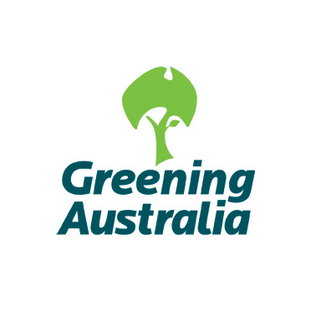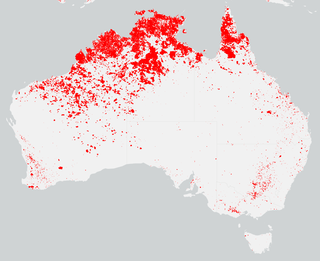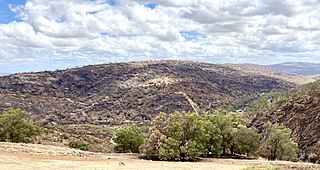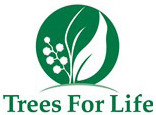
The Black Friday bushfires of 13 January 1939, in Victoria, Australia, were part of the devastating 1938–1939 bushfire season in Australia, which saw bushfires burning for the whole summer, and ash falling as far away as New Zealand. It was calculated that three-quarters of the State of Victoria was directly or indirectly affected by the disaster, while other Australian states and the Australian Capital Territory were also badly hit by fires and extreme heat. As of 3 November 2011, the event was one of the worst recorded bushfires in Australia, and the third most deadly.

The Ash Wednesday bushfires, known in South Australia as Ash Wednesday II, were a series of bushfires that occurred in south-eastern Australia on 16 February 1983, which was Ash Wednesday. Within twelve hours, more than 180 fires fanned by hot winds of up to 110 km/h (68 mph) caused widespread destruction across the states of Victoria and South Australia. Years of severe drought and extreme weather combined to create one of Australia's worst fire days in a century. The fires were the deadliest bushfire in Australian history until the Black Saturday bushfires in 2009.

Greening Australia is an Australian environmental organisation, founded in 1982, the International Year of the Tree, to protect, restore and conserve Australia's native vegetation. Greening Australia was formed by the United Nations Association of Australia and the Nursery Industry Association of Australia.
Trees for Life is a registered charity working to rewild the Scottish Highlands.

The New South Wales Rural Fire Service is a volunteer-based firefighting agency and statutory body of the Government of New South Wales.
Fire-stick farming, also known as cultural burning and cool burning, is the practice of Aboriginal Australians regularly using fire to burn vegetation, which has been practised for thousands of years. There are a number of purposes for doing this special type of controlled burning, including to facilitate hunting, to change the composition of plant and animal species in an area, weed control, hazard reduction, and increase of biodiversity.

Marble Hill was the Vice-Regal summer residence for the Governor of South Australia for seventy-five years, from 1880 to 1955. It is also the name of a ward of the Adelaide Hills Council, and a suburb, both named after the residence and in which the residence is located. It is about 20 kilometres (12 mi) east of Adelaide between the towns of Ashton and Cherryville, and has expansive views of the Adelaide Hills to the North and East, and the Adelaide Plains to the West.

Eidothea hardeniana, commonly named nightcap oak, is a species of tree, up to 40 m (130 ft) tall, of the plant family Proteaceae, which botanist Robert Kooyman recognised as a new species only recently in 2002. The species has an official listing as critically endangered on the Australian Commonwealth EPBC Act and as Endangered on the NSW Threatened Species Act. The name hardeniana honours the botanist Gwen Harden. Phylogenetics studies now suggest it represents a basal branch of the Proteoid clade of the Proteaceae.

Bushfires in Australia are a widespread and regular occurrence that have contributed significantly to shaping the nature of the continent over millions of years. Eastern Australia is one of the most fire-prone regions of the world, and its predominant eucalyptus forests have evolved to thrive on the phenomenon of bushfire. However, the fires can cause significant property damage and loss of both human and animal life. Bushfires have killed approximately 800 people in Australia since 1851, and billions of animals.
Gondwana Link is one of the largest and most ambitious conservation projects proposed in Australia’s history.

The bushfire season in the summer of 2014–15, was expected to have the potential for many fires in eastern Australia after lower than expected rainfall was received in many areas. Authorities released warnings in the early spring that the season could be particularly bad.

David James Speirs is an Australian politician. He has been a Liberal member of the South Australian House of Assembly since the 2014 state election and leader of the Liberal Party since 19 April 2022. He represented Bright until 2018 and then Black following a redistribution of electoral boundaries. Speirs served as the Minister for Environment and Water in the Marshall Ministry between March 2018 and March 2022.

The 2015 Sampson Flat fires were a series of bushfires in the Australian state of South Australia, the area affected was predominantly the northern Adelaide Hills and the outer Adelaide metropolitan area. The fire began on 2 January 2015 during a day of extreme heat and lasted until 9 January 2015; and burnt more than 20,000 hectares.

The 2019–20 Australian bushfire season, was a period of bushfires in many parts of Australia, which, due to its unusual intensity, size, duration, and uncontrollable dimension, is considered a megafire. The mega fire was caused due to a wide spread of many uncontrollable fires in different locations that led to a megafire.

The South Australian State Emergency Service is the South Australian branch of the State Emergency Service, partner of the Australian Council of State Emergency Services. The service, founded in 1962, is volunteer based, and prepares and responds to emergencies within the state. It receives on average 10,000 calls for assistance per year. The SASES is a separate entity, independent of other branches, and reports to the South Australian Minister for Emergency Services. The service is funded by a levy imposed on every household in the state, and is currently led by chief officer Chris Beattie with assistance from the South Australian Fire and Emergency Services Commission (SAFECOM).

The 2021 Wooroloo bushfire was a fast moving bushfire that started on 1 February in Wooroloo, 45 kilometres (28 mi) north-east of the Perth central business district, in the Shire of Mundaring, Western Australia. By 2 February, the bushfire emergency had spread to Shires of Chittering and Northam, and the City of Swan. It had destroyed at least 86 houses and 2 fire trucks. By 6 February, the bushfire had travelled 26 km (16 mi) from its source. The fire coincided with a five day lockdown of the Perth metropolitan region that started at 6pm on 31 January, due to a case of COVID-19 outside of hotel quarantine. In July 2021, WA Police charged a man with a breach of duty and carrying out an activity that could cause a fire, alleging that he used an angle grinder that caused sparks.
Rotary Australia World Community Service (RAWCS) is an Australian non-profit public company limited by guarantee which is controlled by Australian Rotarians. Its purpose is: “Within the areas of focus of Rotary International, to enhance support services to Australian Rotarians and Rotary Clubs to assist disadvantaged communities and individuals with humanitarian aid projects.” Every Australian Rotary District is represented through their District Governor who is a member of the Company. This membership elects a Board of Directors to govern the company on their behalf.
Nature Foundation, formerly The National Parks Foundation and Nature Foundation SA Inc. (NFSA), is the largest non-government nature conservation organisation based in South Australia. It was founded in October 1981, and is supported by the Government of South Australia as well as the Australian Government. The organisation owns and manages several nature reserves, with the largest being Witchelina and Hiltaba, which are converted stations.













